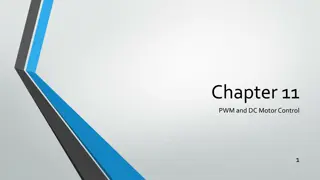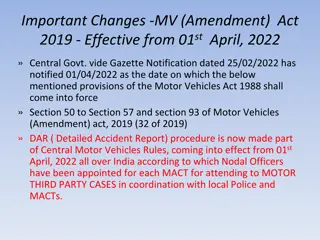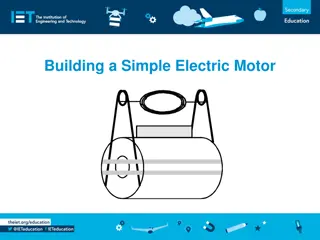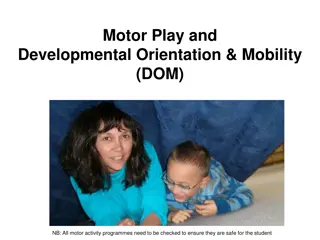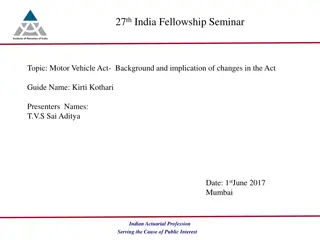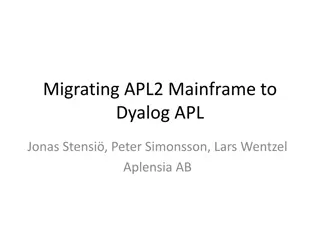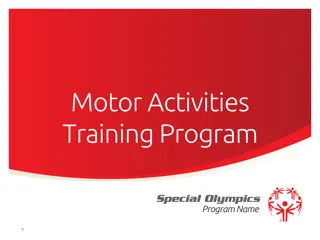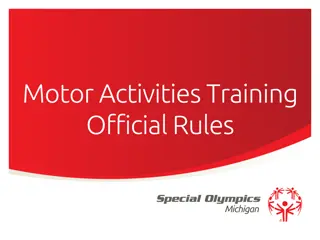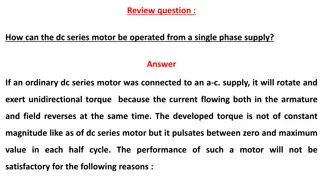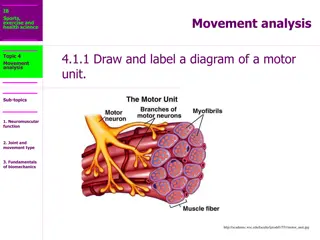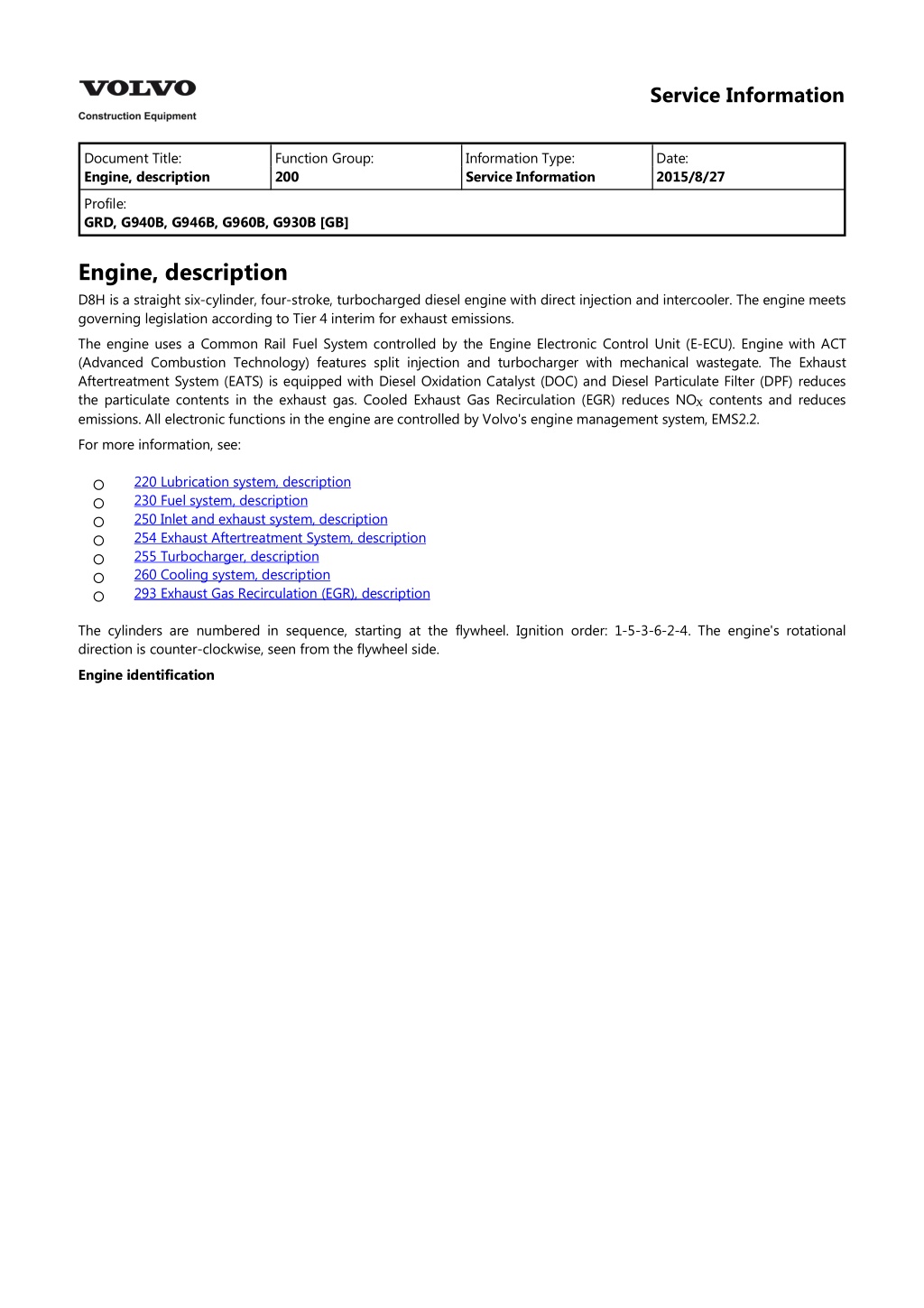
VOLVO G946B MOTOR GRADER Service Repair Manual Instant Download
Please open the website below to get the complete manualnn//
Download Presentation

Please find below an Image/Link to download the presentation.
The content on the website is provided AS IS for your information and personal use only. It may not be sold, licensed, or shared on other websites without obtaining consent from the author. Download presentation by click this link. If you encounter any issues during the download, it is possible that the publisher has removed the file from their server.
E N D
Presentation Transcript
Service Information Document Title: Engine, description Function Group: 200 Information Type: Service Information Date: 2015/8/27 Profile: GRD, G940B, G946B, G960B, G930B [GB] Engine, description D8H is a straight six-cylinder, four-stroke, turbocharged diesel engine with direct injection and intercooler. The engine meets governing legislation according to Tier 4 interim for exhaust emissions. The engine uses a Common Rail Fuel System controlled by the Engine Electronic Control Unit (E-ECU). Engine with ACT (Advanced Combustion Technology) features split injection and turbocharger with mechanical wastegate. The Exhaust Aftertreatment System (EATS) is equipped with Diesel Oxidation Catalyst (DOC) and Diesel Particulate Filter (DPF) reduces the particulate contents in the exhaust gas. Cooled Exhaust Gas Recirculation (EGR) reduces NO? contents and reduces emissions. All electronic functions in the engine are controlled by Volvo's engine management system, EMS2.2. For more information, see: 220 Lubrication system, description 230 Fuel system, description 250 Inlet and exhaust system, description 254 Exhaust Aftertreatment System, description 255 Turbocharger, description 260 Cooling system, description 293 Exhaust Gas Recirculation (EGR), description The cylinders are numbered in sequence, starting at the flywheel. Ignition order: 1-5-3-6-2-4. The engine's rotational direction is counter-clockwise, seen from the flywheel side. Engine identification
Figure 1 Identification plates The engine's serial number is stamped on the cylinder block's side. The identification plates on the cylinder block's side and on the valve cover contains model designation, serial number, manufacturing country, recommended fuels and so on. It also includes the emission related supplementary information. The engine's model designation and serial number must be indicated when ordering spare parts. Engine protection The ECU contains functionality designed to protect the engine from damage during extreme operating conditions or from further damage when an essential engine component fails. There are several proactive functions, and different applications have different functions activated. The functions that can be activated are: High coolant temperature
High inlet manifold air pressure High inlet manifold air temperature High oil temperature Low oil pressure Low coolant level High temperature of cooled EGR exhausts after the EGR-cooler High crankcase pressure High temperature of EGR actuator High soot load High differential pressure across Diesel Particulate Filter (DPF) High exhaust temperature High ECU temperature High DPF temperature EATS air pump failure Various protective actions such as warning lights, engine torque reduction, engine speed limitation, and vehicle speed limitation may be taken when the above functions reach dangerous levels that may damage the engine. In order to always allow the operator to move a machine away from an unsafe situation, there is a delay of at least 30 seconds before the protective actions (such as forced idle and forced shutdown) are activated after a Key-ON. If the engine has been forced to shutdown or forced to idle due to an active engine protection function, the operator can obtain a 30 second delay by powering down the EMS with a Key-OFF for 7 seconds and then a Key-ON (the EMS is powered down by the Vehicle-ECU (V-ECU) after the ignition key has been in its OFF position for approx. 7 seconds). In addition to the above protective functions, other software functions could request engine protection, such as: High Altitude (ensures that high compressor charge-air temperature is never reached) Low Coolant Temp Crank Sensor Failure Gear Ratio Regeneration Warning lights There are two levels for warning lights, an amber caution light and a red stop light. The amber light indicates a warning situation The red light indicates that the vehicle must be stopped. Forced idle The engine can be forced to idle speed by the engine protection function. Forced idle is active until conditions triggering the problem are back within normal working range or the EMS is powered down. Engine shut down The engine can be forced to shut down after conditions have reached levels that may cause engine failure and the machine speed is below a specified value. Machine Speed and Engine Speed Limits The engine protection function can limit the speed of the vehicle and/or the engine's rpm. Levels of engine protection Available proactive functions depend not only on the application but also on what level of protection that has been activated for the specific machine. Two levels of engine protection are offered, the standard level is Basic protection and the optional level Extended protection. The general difference between basic and extended engine protection is that no active actions such as forced idle and forced shutdown will be taken in basic engine protection (with the exception of crankcase pressure that can cause shutdown in either setup). Warnings will be given to the operator regardless of engine protection level. Parameters (MCJ) Trimcode CRIN 3.3 injector cylinder 1 (MCK) Trimcode CRIN 3.3 injector cylinder 2 (MCL) Trimcode CRIN 3.3 injector cylinder 3 (MCM) Trimcode CRIN 3.3 injector cylinder 4 (MCN) Trimcode CRIN 3.3 injector cylinder 5 (MCO) Trimcode CRIN 3.3 injector cylinder 6
https://www.ebooklibonline.com Hello dear friend! Thank you very much for reading. Enter the link into your browser. The full manual is available for immediate download. https://www.ebooklibonline.com
(FAU) Automatic engine shut off (FAV) Automatic engine shut off, time (YA) Idle speed, setting Function check 17030-3 Parameter, programming Diagnostics Detailed information about the following relevant warnings and error codes is available under the diagnostics tab. Component FX1006 Control unit MID128 MID128 MID128 MID128 MID128 MID128 MID128 MID128 MID128 MID128 MID128 MID128 MID128 Message ID PID98 PID175 PID100 PID97 PID105 PID102 PID412 PID81 PID111 PID110 PPID55 PPID235 PPID326 SE2203 SE2302 SE2507 SE2508 SE2516 SE2519 SE2603 SE2606 E-ECU temperature Emergency stop (Engine shut down) Soot load
Service Information Document Title: E-ECU, MID 128, changing non-programmed ECU Function Group: 200 Information Type: Service Information Date: 2015/8/27 Profile: GRD, G946B [GB] E-ECU, MID 128, changing non-programmed ECU This operation also includes required tools and times for applicable parts of the following operations: 191 Service position Op nbr 200-068 191 Service position 1. Place machine in the service position. Refer to . 2. Turn OFF the battery disconnect switch. 3. Download software to VCADS Pro computer for target machine. 4. Connect the VCADS Pro computer to the machine, and perform the operation '28423-3 MID 128 ECU, programming'. 5. When VCADS Pro 'MID 128 ECU, programming' window appears, follow the instructions for replacing E-ECU. 6. Remove the right side hydraulic tank covers. 7. Disconnect the wiring harness connectors from E-ECU and remove two (2) screws fixing the clamps. Figure 1 1. 2. Engine ECU (E-ECU) module Aftertreatment control module (ACM) NOTE! Pull up the locking device to disconnect the connector. 8. Remove four (4) screws fixing the E-ECU. 9. Install new E-ECU, and tighten four (4) screws.
10. Connect the wiring harness connectors to the E-ECU and tighten two (2) screws fixing the clamps. 11. Install the right side hydraulic tank covers. 12. After replacing E-ECU, press OK button of VCADS Pro operation '28423-7 MID 128 control unit, programming'. Now VCADS Pro starts the programming of software and parameters to the new E-ECU.
Service Information Document Title: E-ECU, MID 128, changing pre-programmed ECU Function Group: 200 Information Type: Service Information Date: 2015/8/27 Profile: GRD, G946B [GB] E-ECU, MID 128, changing pre-programmed ECU This operation also includes required tools and times for applicable parts of the following operations: 191 Service position Op nbr 200-070 191 Service position 1. Place machine in the service position. Refer to . 2. Turn OFF the battery disconnect switch. 3. Connect VCADS Pro computer to the machine, and perform the operation '17030-3 Parameter, programming'. 4. Use the function 'save all parameters to job card'. 5. Remove the right side hydraulic tank covers. 6. Disconnect the wiring harness connectors from E-ECU and remove two (2) screws fixing the clamps. Figure 1 1. 2. Engine ECU (E-ECU) module Aftertreatment control module (ACM) NOTE! Pull up the locking device to disconnect the connector. 7. Remove four (4) screws fixing the E-ECU. 8. Install new E-ECU, and tighten four (4) screws fixing the E-ECU. 9. Connect the wiring harness connectors to the E-ECU and tighten two (2) screws fixing the clamps. 10. Install the right side hydraulic tank covers.
11. Connect VCADS Pro computer to the machine, and perform the operation 17030-3 Parameter, programming'. Now the customer parameters are changed according to the job card saved at step 2.
Service Information Document Title: VCADS Pro, Operations Function Group: 200 Information Type: Service Information Date: 2015/8/27 Profile: GRD, G946B [GB] VCADS Pro, Operations The following VCADS Pro operations are available for function group 2. Operations used when changing or working on components are mandatory. Tests Operation 20046-3 Read out engine information Application The operation is used to read out the engine emission and engine certificate information when requested by the customer or other interested parties. Used when there is a suspicion of fault and/or at abnormal values/readings. This test indicates if there is any deviation in compression in any cylinder in relation to the other cylinders. As a first check this operation is both easy and fast to perform instead of a real compression test. Used when there is a suspicion of fault and/or at abnormal values/readings. Used when there is a suspicion of fault and/or at abnormal values/readings. Check the fuel system on common rail engines. In this test, it is possible to check the engine at different running conditions. Used to reset the age compensation value stored in the MID 128, E-ECU. A reset is needed either when the E-ECU is replaced and there is no possibility to read out the values from the old E-ECU or when a new Nox sensor is mounted. Used when there is a suspicion of fault and/or abnormal values/readings. Air for combustion and HC injection. Used when there is a suspicion of fault and/or abnormal values/readings. The test checks; The fuel supply to the shut off valve, pressure and temperature The pressure after MV1 to the HC injector The pressure after MV2 to the burner Used to remove any air in the EATS system. 21006-3 Cylinder compression, test 23017-3 Feed pressure, inspection 23712-3 Injectors shut off, manual 23777-3 Fuel system, check 25438-3, Nox sensor, age compensation, reset 25410 3, Air pump exhaust aftertreatment test 25411 3, Burner exhaust aftertreatment, test 25440-3 Fuel aftertreatment system, test pressure, exhaust 25433-3, Fuel system exhaust aftertreatment, bleeding 25438 3, NOx sensor, age compensation, reset Used to reset the age compensation value stored in the MID 128, E-ECU. A reset is needed either when the E-ECU is replaced and there is no possibility to read out the values from the old E-ECU or when a new Nox sensor is mounted. Perform a simple check of the included components in the exhaust aftertreatment system. Used when the soot load level becomes higher than what can be removed by the normal regeneration process. See 254 Exhaust Aftertreatment System, description Used when there is a suspicion of fault and/or at abnormal values/readings. 25456 3, Exhaust aftertreatment diagnostics 25457-3 Diesel Particulate Filter Service Regeneration 28407-3 Sensor values, monitoring Programming Operation 25801-3 MID 233 Control unit, programming When changing ACM or only reprogramming. 25802-3 MID 233 Control unit, campaign Application
28423-3 MID 128 ECU, programming When 200 E-ECU, MID 128, changing non-programmed ECU changing ECU or only reprogramming. See 28422-3 MID 128 ECU, campaign
Service Information Document Title: Engine, removing Function Group: 210 Information Type: Service Information Date: 2015/8/27 Profile: GRD, G930B, G940B, G946B, G960B [GB] Engine, removing This operation also includes required tools and times for applicable parts of the following operations: 191 Service position 173 Coolant, draining 821 Engine hood, removing 173 Hydraulic oil tank, draining 451 Drive shaft, removing 256 Air cleaner, removing Op nbr 210-070 9998547 Lifting tool Pump drive support, refer to 080 Drawings, E-tools 191 Service position 1. Place machine in the service position. Refer to . 2. Disconnect the battery. 173 Coolant, draining 3. Drain the coolant. Refer to . 821 Engine hood, removing 4. Remove the engine hood. Refer to . 173 Hydraulic oil tank, draining 5. Drain the hydraulic oil tank. Refer to . 451 Drive shaft, removing 6. Remove the upper drive shaft. Refer to . 7. Remove the lower left side engine cover. 8. Clean and label the three (3) hoses connected to the washer fluid tank on the right side of the machine. 9. Disconnect the wiring harness from the washer fluid tank. 10. Disconnect the three (3) hoses from the washer fluid tank. Seal all open hose ends or ports. 11. Remove the lower right side engine cover with washer fluid tank attached. 12. Remove the left and right side support handle plates. Engine left side disconnecting 13. Clean and label the upper radiator hose. 14. Disconnect the upper radiator hose. Seal all open hose ends and ports. 15. Clean and label lower radiator hose. 16. Disconnect lower radiator hose. Seal all open hose ends and ports.
17. Clean and label expansion tank hose. 18. Loosen clamps from the expansion tank hoses at the engine and remove expansion tank and hoses from the engine. 19. Disconnect the air compressor hose, if equipped from the air intake tube. Seal all open hose ends and ports. 20. Label wiring harness connected to the alternator. Figure 1 1. Alternator wiring harness 21. Disconnect the wiring harness from the alternator. 22. Remove clamps securing the alternator wiring harness to the engine. 23. Label battery main switch cables. 24. Remove battery main switch bracket from the frame. 25. Disconnect cables from the battery main switch. 26. Label the oil level sensor wiring harness. 27. Disconnect the oil level sensor wiring harness. Figure 2
1. Oil level wiring harness 28. Clean and label the air compressor hose, if equipped. 29. Disconnect the air compressor hose. Seal all open hose ends and ports. 30. Clean and label cab heater hoses. 31. Place a suitable container under the cab heater hoses to catch any residual fluid in the hoses. 32. Disconnect cab heater hoses. Seal all open hose ends and ports. 33. Remove bolts securing the fuel/water separator bracket to the engine hood support. Figure 3 1. Fuel/water separator bracket bolts 34. Remove bolts from the wiring harness cover. 35. Disconnect the engine wiring harness. 36. Remove bolt from the wiring harness clamps. Figure 4 1. Wiring harness cover plate
Suggest: For more complete manuals. Please go to the home page. https://www.ebooklibonline.com If the above button click is invalid. Please download this document first, and then click the above link to download the complete manual. Thank you so much for reading
2. 3. Engine wiring harness Wiring harness clamps 37. Label the glow plug control unit wire. 38. Disconnect the wire from the glow plug control unit. 39. Clean and label the fuel hoses. Figure 5 1. Fuel hose 40. Place a suitable container under the fuel hoses to catch any residual fuel in the hoses. 41. Disconnect the fuel hoses from the engine. Seal all open hose ends or ports. Right side engine disconnecting 42. Clean and label charge air cooler (CAC) tubing. Figure 6 1. 2. Upper CAC tube Lower CAC tube 43. Disconnect the CAC tubing. Seal all open hose ends or ports. 44. Clean and label the air intake tube and hose.
Figure 7 1. 2. Air intake tube Diesel particulate filter air compressor hose 45. Loosen clamp and disconnect the diesel particulate filter air compressor hose. Seal all open hose ends and ports. 46. Loosen clamp at the turbo. 47. Loosen clamp connecting air intake tube to the cooling package. 48. Remove the air intake tube. Seal all open hose ends and ports. 49. Remove air conditioner belt. 50. Label air conditioner wiring harness. 51. Disconnect wiring harness from the air conditioner compressor. 52. Remove the four (4) bolts securing the air conditioner compressor to the engine. Figure 8 Air conditioner compressor bolts 53. Remove the air conditioner compressor from the engine. 54. Remove bolts securing the wiring harness bracket to the frame.
https://www.ebooklibonline.com Hello dear friend! Thank you very much for reading. Enter the link into your browser. The full manual is available for immediate download. https://www.ebooklibonline.com


